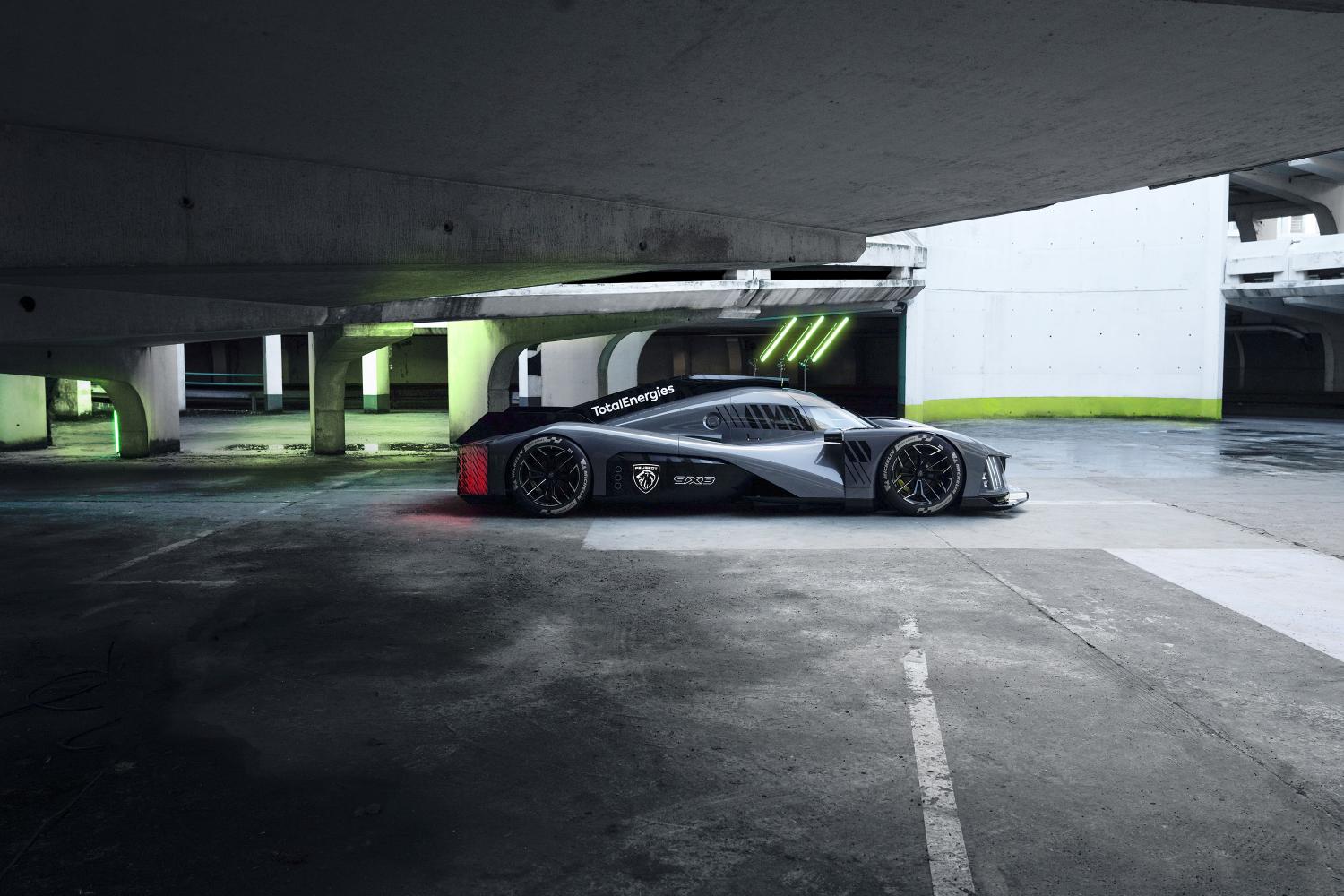In the words of twice 24 Hours of Le Mans winner Romain Dumas, LMP1 Hybrids were “owned just as much by systems engineers as they were by the drivers”. For their successors, however, it could well be the designers who will bask in the glory. In the past, performance was the primary concern, well before style and brand identity entered the equation. As a result, morphologically speaking, prototypes could barely be told apart. The introduction of Hypercar regulations has, however, offered more latitude for design considerations.
The 9X8, the Hypercar created for Peugeot’s re-entry into the endurance arena, is a real head-turner that oozes pure speed. The marque’s engineers and designers have worked closely together to produce a machine that marries style and technology. “To identify the theme for our future racing car, we first launched a competition between the designers,” explains Design Director Matthias Hossann. “We received a lot of submissions as this project aroused massive enthusiasm, with the prospect of one day seeing our creation compete against the world’s most prestigious brands on the most ‘mythical’ of tracks.” For the 9X8, the performance-driven engineers let the designers’ creative juices flow. “This car will stand as a milestone in the history of Endurance racing,” Hossann promises.
With or without a rear wing?
There is a broad consensus among observers and specialists that this Hypercar makes a clean break with previous generations of racing cars of every make. This impression is reinforced by the lack of a rear wing, giving the car a somewhat unique shape.
The rear wing made its first appearance at the 1967 24 Hours of Le Mans. Since 1971, no car has won the race without one. Depriving the 9X8 of this aerodynamic appendage is an audacious move by Peugeot’s designers and engineers. “This configuration is permitted by the ACO/FIA Hypercar regulations,” Olivier Jansonnie, the Technical Director of Peugeot Sport’s WEC programme, points out. “Our calculations and wind tunnel work have confirmed the pertinence of our decision. Along with the developments and settings this option calls for, we expect it to be validated as we test at different circuits with differing characteristics.”
Making a mark after dark
Peugeot’s designers have also taken on board the fact that cars race into the night in the longer endurance events. “Our Peugeot Design team includes fans of the 24 Hours of Le Mans,” Hossann continues. “Having been there as spectators, they know that at night, trackside, the cars have few distinctive signs. Some cars can be recognised by the sound of their engines, but in many places, the cars’ visual presence is mostly limited to bright lines fading away into the night.” Considerable thought has therefore been given to the 9X8’s illuminated components for easy identification in daylight and at night. Peugeot’s “three claw” motif that appears on all the make’s production cars today was an obvious starting point. “We didn't have too much trouble putting them on the front of our 9X8 Hypercar, but putting them on the rear required a lot of work. We've integrated the three light claws in separate composite components creating gaps through which air is extracted. We can't wait to see their effect on the track.”
With its avant-garde design, feline posture, sleek lines with a sporty edge, and signature lights, the Peugeot 9X8 has what it takes to become a new crowd favourite at the 24 Hours of Le Mans. To whet your appetite for the 9X8’s track début, enjoy these pictures taken by fashion and supercar photographer Agnieszka Doroszewicz.





